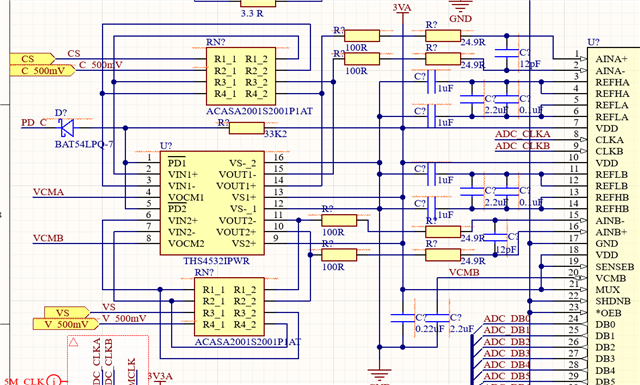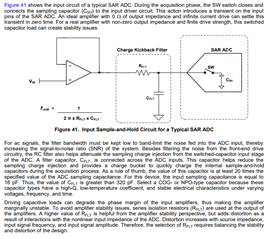Other Parts Discussed in Thread: ADC3641
Dear Friends
I am the first time to design a differential amp, and seeking help to review/confirm my design.
I have two analog signals: 0V to 2V, 0Hz to 2MHz, to be fed to a differential input ADC. I don't have negative power, to get 0V signal, I use a 500mV reference (from an Op-amp) for the front-end instrument amplifier. therefore, the analog signals become 0.5V to 2.5V, I power the THS4532 with 3V, gain = 1 and Vcom = 1.5V(output from ADC). Here is the schematic.

My questions /concerns to be confirmed are below.
1. though both analog and reference signals are from instrument amplifiers and Op-amp, the Inst-amp and Op-amp have different output impedances, I know closed-loop output impedances of Op-amp are very small, but they are indeed different, is it ok to ignore them?
2. the ADC datasheet recommends an input (for ADC) filter of 25 ohm + 12pF cap, the 4532 also requires output resistor Ro, I am not sure if I should combine Ro with 25 ohm together or separate them (as the schematic), BTW, with ADC sample and hold cap = 4pF on each line, I am not sure if Ro = 100 ohm (as in schematic) is good or not.
3. When PDs are pulled down by a controller, is it ok to have 2V voltage fed to the input of 4532 since its absolute maximum Vid = 1V required in the datasheet?
4. Considering the analog signals are very wide dynamic and mostly DC nature, any potential issue in the schematic design or any additional circuits may be suggested to optimize the design.
Thank you in advance
Tony


